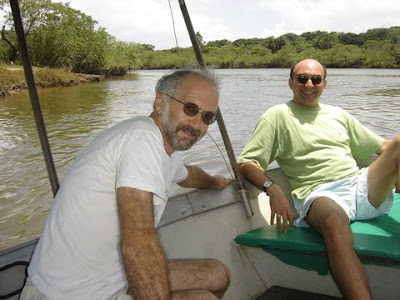
Unique and delightful Christmas traditions are followed in France. The centre of attraction in all homes is the Nativity scene or crèche that is decorated with cute little clay figures called
'Santons' or
'Little Saints'. These colourful little saints are a special and age old feature of Christmas in France and are prepared all round the year by skilled craftsmen in the south of France. Popular Santons include shepherds, Magi, Holy Family besides local characters and dignitaries.
In France, Christmas Tree is not so popular but it is symbolic presence can be felt in the Christmas Cake. The traditional French Christmas Cake is prepared in the shape of Yule log and is called the
buche de Nol, meaning
"Christmas Log". This cake is a special feature of the
Le rveillon - a grand feast of the season celebrated after midnight mass on Christmas Eve.
On the eve of Christmas, French children leave their shoes or wooden clogs called
sabots by the fireplace so that their favorite Christ Child or
Pere Noel could fill it with gifts. Children believe that Pere Noel travels with his stern disciplinarian companion Pre Fouettard, who tells Pere Noel about the behavior of each child in the past year. In some parts of France Pere Noel brings gifts for children on St. Nicholas Eve (December 6) and visits again on Christmas. In other places it is
le petit Jesus who brings the gifts. Adults usually wait until New Year's Day to exchange gifts.
Latin Xmas.
Throughout South America Christmas is celebrated in a deeply religious way. The main focus of the season throughout the continent is the presepio ("the manger"). Often a whole room is devoted to the presepio display, complete with landscape and tiny figures made to scale. Though the central feature is the manger at Bethlehem, elaborate scenes will include hills full of shepherds gazing upon the heavenly host, the Wise Men crossing the desert on their camels, water mills, grottos, electric trains, and even sailing boats on the sea.
Brazil Father Christmas is called Papai Noel. Many Christmas customs are similar to USA or UK. For those who have enough money, a special Christmas meal will be chicken, turkey, ham, rice, salad, pork, fresh and dried fruits, often with beer. Poorer people will just have chicken and rice.
Chile As in most Latin American nations, Chile's Christmas celebrations centre on the church and the family. The nation's Catholics observe the novena, nine days of prayer and fasting before Christmas.
The chimneys on the homes are quite small in this warm climate, therefore Viejo Pascuero, the Santa Clause can climbs through the window with his gifts. Christmas Eve dinner is eaten very late, most often after Midnight Mass or Misa del Gallo, and consists of turkey and an array of salads, seafood, and olives, accompanied by the local wine, for which Chile is well known. Deserts always include Pan de Pascua, a sweet Christmas bread, along with fruit, cake and cookies.
Argentina People go to the church with family, then come back to a family gathering. At midnight after eating they toast, then the adults' dance while younger people go out to see the fireworks. After this they go to sleep, but before opening the presents under the Christmas tree. That day is very special for because they are Christian and celebrate Jesus' birth on the 24th of December.
For the dinner it is pork, turkey, and a great variety of other foods. Then the table is covered with sweet things, cider, beer, and juice for consuming while waiting for the time of the toast. After the toast all the family chat, others play.
Venezuela In Venezuela on December 16th families bring out their pesebres (cribs) which are specially designed depiction of the nativity scene. It is a custom to attend at one of nine carol services is observed by most Venezuelans. Firecrackers explode and bells ring to call worshippers from bed in the pre-dawn hours. Families attend a mass on this night and then return home to a huge and fancy dinner.
On January 6th when the children awaken they will discover that the straw that they had left beside their bed the night before has gone and in its place are gifts the children know that the Magi and their camels have been and when they go to look in the mirror if they have a black smudge on their cheek they know that Balthasar, King of the Ethiopians has kissed them whilst they slept.
http://www.christmas-day.org/christmas-story.html






















